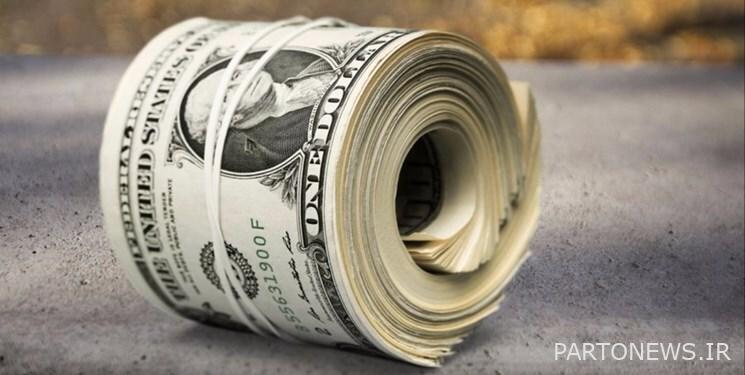The appearance of the effects of “currency stabilization policy” in the economy with a sharp decrease in producer inflation

According to Iran Economist, one of the most important policies to reduce the inflation rate is the policy of controlling liquidity and controlling the value of the national currency. In this regard, since the beginning of the 13th government, the policy of controlling some of the balance sheets of banks and controlling the budget deficit was put on the agenda.
In the field of liquidity growth control, its effects were fully visible in the field of liquidity growth rate, so that the liquidity growth rate decreased from about 41% in August 1400 to 31.1% at the end of 1401 and 26.4% at the end of October. But due to the increase in the price of the currency, this policy did not show its effects on the general level of prices.
After the change of the head of the central bank in the 13th government, along with the continuation of the policy of controlling a certain amount of banks’ balance sheets, more serious policies to manage the currency market were put on the agenda and these policies became known as the stabilization policy. The results of the stabilization policy left their effects on the inflation rate with a delay of several months, and in the meantime, the effects of this policy are more visible in the field of producer inflation than consumer inflation.
Producer inflation is one of the predictive variables for changes in the consumer inflation rate because changes in production costs have a direct impact on the prices of goods and services consumed by people.
On December 11, 1402, referring to the 8% decrease in producer inflation and predicting a decrease in inflation in the consumer market, the Central Bank announced that following the adoption of the economic stabilization policy, the reduction of exchange rate fluctuations and price stability in imported basic goods, “point by point inflation trend The producer price decreased by eight percentage points from 42.4% in March 1401 to 34.4% in November this year, and inflation in the consumer market is expected to decrease in the coming months.
According to the latest statistics of the Central Bank, the monthly producer inflation rate has decreased to 0.8% in November, while in the previous months, the monthly inflation was always higher than 1% and even more than that.
According to these statistics, in November of this year, the monthly inflation in the industry sector was zero, and the inflation in the transportation and storage sector was 0.4%, hotels and restaurants 2%, information and communication 0.2%, education 1.5%, health and social work 1.4%, others Educational, health, social and personal services were 3.7%.
* Source: Central Bank

* The downward slope of the producer inflation curve in the quarter ending in November
In order to more closely examine the evolution of producer inflation, we categorized monthly inflation and monthly inflation separately for each sector in three-month time periods; This category shows a more detailed trend of the changes in the producer inflation index.
According to this information in the table, the monthly inflation in the quarter ending in November 1401 was equal to 3.5%, but due to the increase in the exchange rate in the second half of the year, the inflation has gradually increased in each three-month period, so that in the quarter ending in February 1401, it was 8.6%, the quarter ending May 1402 has increased to 9.8%.

This variable found a decreasing trend in the quarter ending in August 1402 and reached 8.9%, but in the quarter ending in November 1402, it decreased more strongly and in this three-month inflation period was equal to 3.4%. In fact, with a slight concession, we can say that the inflation in the three months ending in November reached one-third of the inflation in the three months ending in May, and it is about 62% less than the inflation in the three months ending in August 1402.
In the quarter ending in November, in the education sector, only because of the beginning of the new academic year and the determination of new tuition fees, in Mehr month, a growth of 21.1% has been recorded, which, of course, is a decrease compared to the quarter ending in November 2014. It shows significant.
Producer inflation in the industry sector was equal to 11.1% in the quarter ending May this year, but this figure decreased to 2.7% in the quarter ending November this year. Also, in the transportation and warehousing sector, inflation was 8% in the quarter ending in May, but it reached 0.8% in the quarter ending in November. Inflation in the hotel and restaurant sector increased from 19.7% to 7.5%, information and communication from 1.5% to 0.3%, health and labor from 12.8% to 4.4%, other public, social and personal services from 18% to 9.4%.
The decrease in the producer inflation rate in the three months ending in November, if it continues in the coming months, will indicate a decrease in the consumer inflation rate in the coming months, and it actually indicates the prospect of a decrease in the inflation rate for the Iranian economy.
These figures show that curbing the exchange rate is one of the most important components in curbing the inflation rate, and false theorizing about the need to increase the continuity of the exchange rate will have no result other than an increase in the general level of prices. The continuation of the policy of controlling a certain amount of banks’ balance sheets, controlling the budget deficit and managing the exchange rate in the market with the deepening of the official market will definitely lead to a continuous decrease in the inflation rate this year and next year.
end of message/

